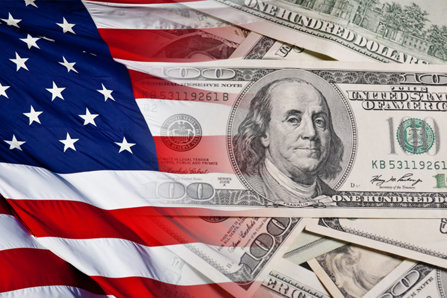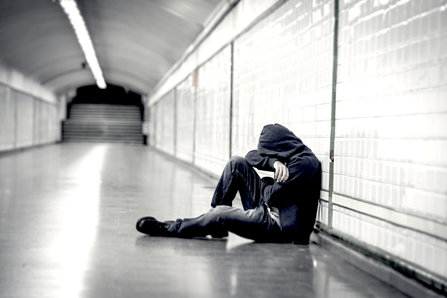What is it Costing America to Treat Addiction?

Everybody knows that addiction is a huge problem in America. But how huge?
There are many ways we could measure the extent of our problem with drugs and alcohol. We can count the number of people who died of overdoses, or how many entered treatment or who reported that they were drug users in telephone surveys. But these measures don’t tell us how much we are spending on treatment.
A report from the Substance Abuse and Mental Health Services Administration (SAMHSA) on projected national expenditures provides some insight. So does a proposed plan to eliminate opioid addiction in the State of Oklahoma.
Let’s look at the facts and figures from these two reports.
SAMHSA’s Report on Costs
From the SAMHSA report Projections of National Expenditures for Treatment of Mental and Substance Use Disorders, 2010-2020:
- From 1986 to 2020, spending was projected to increase from $9 billion to $42 billion.
- Only 9% of these costs are out-of-pocket payments.
- Sixteen percent comes from private insurance.
- Medicare and Medicaid (your tax dollars) will pay about 32%.
- Federal, state and local funds (also your tax dollars) will pay the remaining 38%.
- One-third of this care will be provided by specialty drug rehab centers.
- Nearly one-third will be provided by hospitals.
- It’s expected that $1.8 billion will be spent on prescription drugs specifically intended to treat substance abuse disorder in 2020. This cost has increased over the last several years because of greater use of Suboxone, Subutex and their generic forms.
- These prescription drug prices are expected to fall slightly after 2020 as some of these formulas go off patent and generic forms of the drugs become available.
Please note that these costs are only to treat existing addictions. Not included are costs to prevent drug use by children or adults, or to re-educate doctors on proper prescribing, or to distribute naloxone to bring people back from overdoses, or dozens of other costs related to eliminating this problem from our land.
Oklahoma’s Report

In 2019, a report was commissioned by the State of Oklahoma to outline an abatement plan for opioid abuse and addiction in the State. While other states had higher rates of overdose deaths, there was a time when no state had a higher rate of prescription drug abuse. In 2009, Oklahoma topped the list of U.S. States for prescription painkiller abuse. In 2012, Oklahoma was no longer at the very top of the list, but there were 127 prescriptions for opioids issued per 100 Oklahoma residents.
Oklahoma's 2019 plan was comprehensive, addressing everything from treating newborns sick from their mothers’ drug use, to expanding drug courts and training recovery coaches. And, of course, treating addiction to opioids. Reviewing the estimated treatment costs for this individual state gives us an idea of what it might cost other states to overcome this problem.
Oklahoma’s Plan Was Compiled for a Lawsuit
The purpose of this plan was to address and eliminate addiction and abuse of just one kind of drug: Opioid painkillers. The reason the plan was so limited was that it was commissioned during the State of Oklahoma’s lawsuit against Johnson & Johnson, which was a result of this company’s overzealous marketing of opioid products that helped fuel the opioid epidemic.
Here are the treatment costs included in this plan.
In a single year, the treatment of every Oklahoman addicted to opioids was estimated at $319 million.
Over a thirty-year period, primary costs added up to $5.8 billion.
Primary costs include outpatient care, detoxing patients, residential care, hospitalization and medication.
Secondary costs over a thirty-year period were estimated at $767 million.
Secondary costs include halfway houses, housing support, employment support and similar services.
It must be noted that Oklahoma is currently seeing a resurgence of their earlier problem with methamphetamine. The cost of treating those addicted to meth or any other drug is not included in these estimates. Eliminating drug abuse and addiction resulting from every drug would be vastly more expensive. Add to that the astronomical cost of eliminating addiction to alcohol, were that project to be undertaken.
What Do These Numbers Mean for American Families?

If we, as a nation, pay $42 billion per year to treat drug addiction, this means that each individual in this country (including babies and retirees) is shelling out $129 per year. So, of course, this burden is primarily shouldered by productive, working adults whose annual bills would be multiples of this sum.
And remember, the cost of treatment is only one of many costs of drug abuse. Other costs include:
- Law enforcement, judicial systems, incarceration
- Treatment of health conditions other than addiction resulting from drug abuse
- Welfare, foster care system
- Costs of property crime, personal crime, industrial crime
- Worker compensation and other insurance
- Business losses
- Productivity losses because of impairment, illness or injury while intoxicated
To these financial costs, add the terrible toll that drug abuse, addiction and loss of life takes on our families. Some families never recover from the loss of a loved one to drugs or alcohol.
Office of the President’s Report on Opioids Only
Another report from the Office of the President from November 2017 isolated the costs of our opioid crisis. The President’s Council of Economic Advisors stated that previous estimates of the cost of our opioid crisis were too low.
This report estimated the total cost of the opioid crisis alone at $504 billion for 2015. Our losses continued to increase after this report was published as the lost of life to opioids continued to climb after 2015.
In calculating this staggering cost, this report took into account all the various costs of drug abuse and addiction, as noted directly above.
With all these billions needing to be spent on recovery, the idea of providing widespread drug prevention services for children and adults, no matter how expensive, begins to look quite economical.
Any time you can help someone make up their mind to avoid drug use and any time you can help a person find lasting recovery from addiction, everyone benefits. Not just that individual, but also their entire family, your community and indeed, the entire country.
Sources:
- https://store.samhsa.gov/product/Projections-of-National-Expenditures-for-Treatment-of-Mental-and-Substance-Use-Disorders-2010-2020/SMA14-4883
- https://www.narconon.org/drug-abuse/signs-symptoms-prescription-drug-use.html
- https://www.ok.gov/odmhsas/documents/Rx%20Abuse%20Prevention%20Plan.pdf
- http://www.oag.ok.gov/Websites/oag/images/Exhibit%20s4734%20-%20State's%20Opioid%20Abatement%20Plan.pdf
- https://www.ok.gov/obndd/documents/Oklahoma%20Drug%20Threat%20Assessment%202018%20FINAL.pdf
- https://www.drugabuse.gov/opioid-summaries-by-state/oklahoma-opioid-summary
- https://www.narconon.org/drug-abuse/signs-symptoms-of-drug-abuse.html
- https://www.whitehouse.gov/sites/whitehouse.gov/files/images/The%20Underestimated%20Cost%20of%20the%20Opioid%20Crisis.pdf


 ®
®